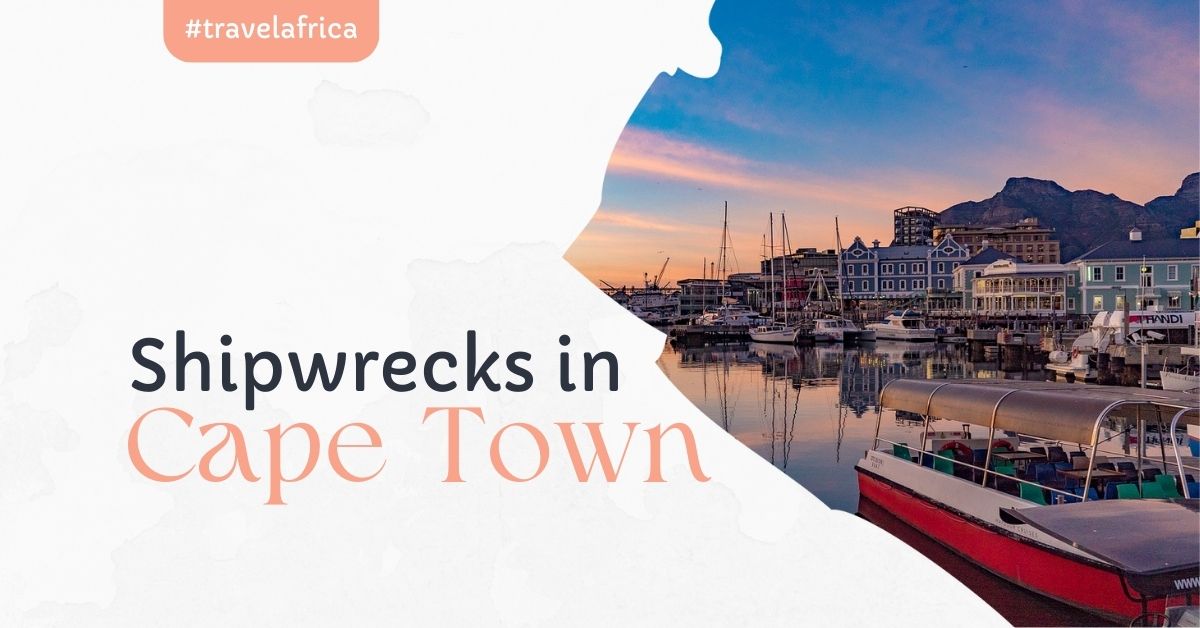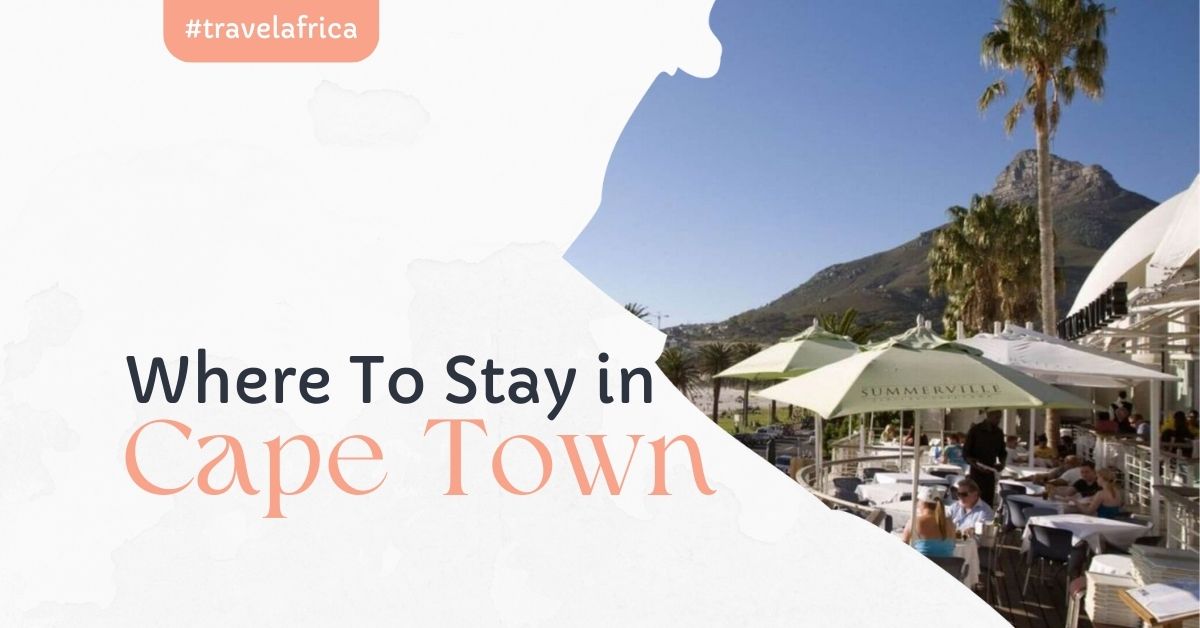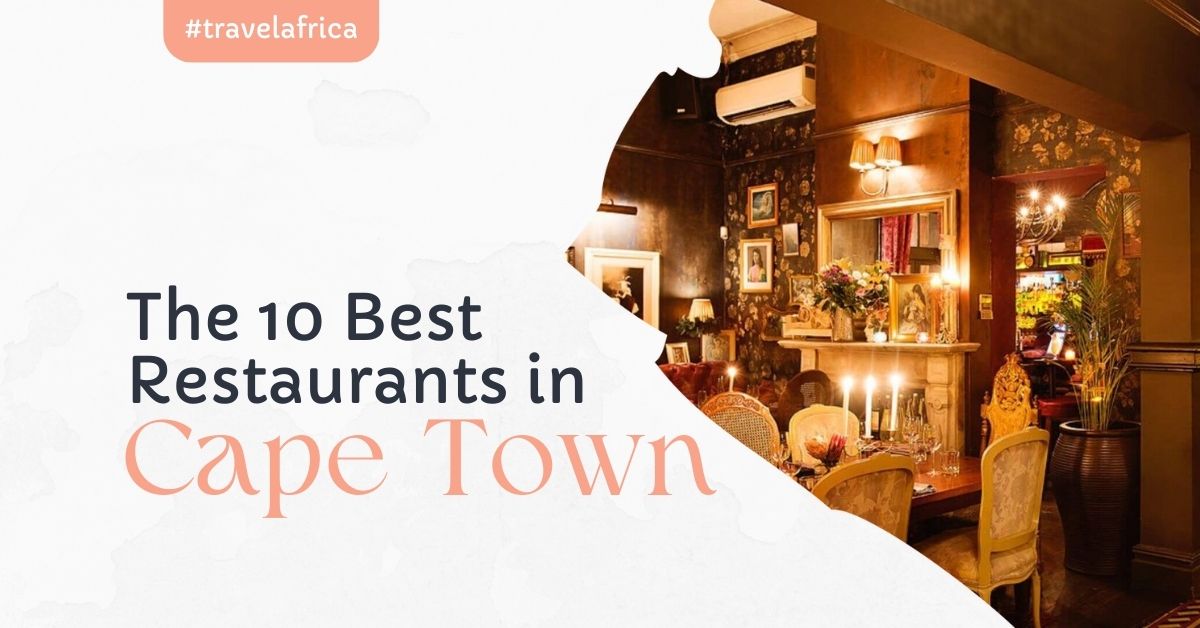When Portuguese explorer Bartolomeu Diashe rounded Cape Point in 1487, he aptly nicknamed it Cabo das Tormentas – The Cape of Storms.
Shortly afterwards, it would be renamed the “Cape of Good Hope” in an attempt to encourage more ships to use the Cape Sea Route that rounded the Cape Point. While the renaming worked to invite people, it definitely didn’t change the stormy seas around it.
Despite the dangerous weather, the Cape is considered a significant waypoint and port for sailors travelling from Europe to Asia. Because of its position, it became a crucial stopping point for sailors to get refreshments.
So crucial, in fact, that people were willing to endure stormy seas and bad weather to stop there.
While other ports have a history of shipwrecks, few have seen as many ships scuttled into rocks or ashore as the Cape of Storms.
Let’s look at 9 of the most notable shipwrecks (and some honourable mentions).
Table of Contents
9 Notable Shipwrecks
There’s a vast history of shipwrecks in and around the Cape of Storms. But, for this article, I’m only going to look at the most notable shipwrecks to date.
1. Soares
- Year: 1505
- Location: Mossel Bay
- Why it’s notable: The Soares was the first Portuguese shipwreck in the Cape, as well as the first recorded shipwreck in the area.
As one of 13 ships under the command of Lopo Soares de Albergaria, the Soares was part of one the most notable fleets in the Portuguese Armada during the 1500s.
The ship ran aground after being sent to scout for the fleet heading back from India. Captain Albergaria and the rest of the fleet spotted the wreck, but the crew was nowhere to be found.
When Portuguese supply ships stopped to investigate it a year later, all they found was the ship’s skeleton remains.
To this day, nobody knows where the crew or the supplies onboard went…
2. Nieuw Haarlem
- Year: 1647
- Location: Table Bay
- Why it’s notable: The real reason the Nieuw Haarlem is on this list is that the wreck of this ship led to the establishment of a refreshment station in the Cape, which would eventually lead to the Cape as we know it, today.
The Nieuw Haarlem was a Dutch ship that ran aground in Table Bay in 1647. All 62 men made it out without any serious injuries and headed to shore.
In the year that they remained in the Cape, the men made contact with indigenous hunters, and grew a friendly relationship with them, exchanging stories and cultures with one another.
3. Johanna
- Year: 1682
- Location: Cape Agulhas
- Why it’s notable: The Johanna was the first British East Indiaman shipwreck in the Cape of Storms. The wreck was found 300 years later by Gavin Clackworthy, who collected a lot of artefacts from the trip. Those artefacts are on display today at the Iziko Museums.
Also known as the Joanna, the Johanna was the very first British East Indiaman vessel to sail from England to India. On 8 June 1682, while heading to India, the ship hit a rock near Cape Agulhas, where it would remain forgotten for 300 years.
The captain and 104 of his crewmen managed to get off of the ship with some of their supplies and made it to the shore. Here, locals guided them to the Cape Castle, where they were safe until they could get on another vessel to make it home.
4. São José Paquete Africa
- Year: 1794
- Location: Cape Point Nature Reserve
- Why it’s notable: While other slave ships have sunk or run aground, the São José Paquete Africa is the only slave ship in history to be found with slaves aboard it.
The São José Paquete Africa was a Portuguese slave ship that sank off the coast of Cape Point. While close to shore, the water was still deep, and around half of the slaves on the ship didn’t survive. In 2015, the Smithsonian Museum partnered with the Iziko Museums and was able to pinpoint exactly where the ship sank.
5. The Arniston
- Year: 1815
- Location: Waenhuiskrans
- Why it’s notable: The nearby town of Waenhuiskrans was renamed Arniston in honour of those who didn’t make it out of the wreck.
Up until 1815, the Arniston had made eight successful trips from England to the Far East.
But on the evening of 30 May 1815, the ship got caught in a violent storm off the Southern Cape Coast. Captain George Simpson ordered the ship to shore, mistakenly thinking that they were near Table Bay.
In fact, they hadn’t even passed Cape Agulhas. The chronometer (a device used to determine direction based on the stars) hadn’t been replaced by the ship’s owners, who thought it was a waste of money.
As a result, the ship hit a reef, and only six of the 378 people onboard managed to make it off of the ship.
The other 372 people, including injured soldiers and children, became a tragic part of the wreck.
6. HMS Birkenhead
- Year: 1852
- Location: Danger Point
- Why it’s notable: Survivors recalled the crew and captain’s behaviour as some of the most notable displays of selflessness and heroism. The sinking of the HMS Birkenhead is also the first recorded instance of the now-famous phrase: “Women and children first”.
On a trip to Algoa Bay, the HMS Birkenhead hit a submerged rock near Danger Point. As water flooded into the breach, many of the lower compartments flooded, drowning soldiers before they could reach the deck.
But, under the command of Captain Robert Salmond, 193 people were able to evacuate the ship. His command to the troops?
“Hold fast.”
Those two words led to a crew showcasing true courage in the face of a certain demise. Obeying their captain’s orders without question, they managed to get all of the women and children onto the lifeboats.
7. SS Lusitania
- Year: 1911
- Location: Cape Point
- Why it’s notable: The wreck of the Lusitania led to the destruction and rebuilding of the Cape Lighthouse closer to the shore. From the wreck of one ship, came the rescuing of many.
Not to be confused with the ship by the same name that was sunk in Ireland during World War I, the SS Lusitania was enjoying a peaceful trip around Cape Point.
Deciding to take a wide turn inland, the ship lost site of the Cape Lighthouse and entered into thick fog.
As the fog broke, it became clear that the current had pulled the ship northwards, towards the reef. Despite the captain’s attempts to change course, the vessel hit Bellows Rock with massive impact. So massive that it perched on the rock. Three lifeboats were sent out, with one capsizing, and two making it to the shore.
Survivors onboard the ship were saved by a tugboat and a warship that evening. In the early hours of the morning, the now abandoned SS Lusitania slipped off of Bellows Rock and disappeared below the waves.
8. Commodore II
- Year: 1946 – 1948
- Location: Milnerton
- Why it’s notable: The Commodore II is the only ship on this list to be intentionally sunk. After the violent storm, it was agreed by the crew that the ship was no longer seaworthy. It was stripped of supplies, set alight, and left to run aground near Milnerton.
Built in the early 20th century, the Commodore II was an American ship during World War II. During a voyage in 1945, the ship was nearly destroyed seven times and even caught fire.
During one particularly violent storm, a crewmate was nearly swept out to sea. Thankfully, all of the crew managed to escape safely. It’s not certain when exactly the wreck happened, but it’s generally accepted to be between 1946 and 1948.
9. Nolloth
- Year: 1965
- Location: Cape Point Nature Reserve
- Why it’s notable: The Nolloth was the first time in South African maritime history that helicopters were used for a rescue mission. Before then, ropes were launched onto ships and the entire vessel had to be brought to shore.
One of the most visible wrecks by Cape Point, the Nolloth was a 347-ton Dutch ship that hit Albatross Rock near what is now the Cape Point Nature Reserve.
It was loaded full of fine whisky, which the captain tried to protect by turning the vessel in the direction of the Cape’s beach to save the spirits. Most of the liquor was saved and some of it even ended up in the hands of lucky locals! Unfortunately, the Nolloth wasn’t so lucky.
The Nolloth couldn’t be taken off of the rocks, so it was salvaged where it lay – which is also where the wreck remains to this day.
Honourable Mentions
The Flying Dutchman
- Year: 1790
- Location: Cape of Good Hope (allegedly)
- Why it’s notable: The Flying Dutchman has been depicted in movies, musicals, operas, poems, and films. Despite this, this one is notable because there’s no concrete evidence to prove that the Flying Dutchman even existed.
Never able to make port – doomed to sail the seven seas forever.
With tales dating back to the 18th century, there’s a lot of mystery surrounding the Flying Dutchman.
As the story goes, the Flying Dutchman was a ship looking for shelter in the Cape during a storm. Unfortunately, with nobody on land to help guide it to shore, the vessel was lost forever. But, if the sky is stormy, and the weather is violent, you may just see the glowing outline of this ghost ship off in the distance.
It’s said that the Flying Dutchman can carry messages to land, or convey information to the dead. But if a sailor should see it, that would be the last thing on his mind…
According to the legend, the Flying Dutchman is a sign of coming doom – if you see it, your ship is almost certain to meet a terrible end.
SS Waratah
- Year: 1909
- Location: Unknown
- Why it’s notable: To this day, there’s been no sighting of the SS Waratah. There are a lot of theories about what happened, ranging from giant waves and whirlpools to even paranormal activity. But nobody has ever been able to find this ship – or the 211 people onboard.
Operating between Europe and Asia, the SS Waratah was considered Australia’s Titanic. It was luxurious and beautiful but it was no match for the ocean.
It was named after a flower found in New South Wales, which is considered extremely beautiful and is able to handle extreme environments.
On 26 July 1909, the SS Waratah took off on its second-ever voyage, heading from Durban to Cape Town. Other ships who saw it pass reported nothing out of the ordinary on the SS Waratah.
As it headed to the Cape, it encountered heavy storms and choppy waves. The last ship to see it reported that there was smoke rising from the boat, although there’s no way to figure out if that was the case.
On 29 July (the day it was expected to arrive), there was no sign of the SS Waratah. For two years, rescue missions took place but nothing was ever found.
The SS Waratah had simply vanished…
BOS 400
- Year: 1994
- Location: Sandy Bay
-
Why it’s notable:
- The BOS 400 is an interesting phenomenon because it’s not a ship, but a crane barge. It wasn’t able to move on its own, so it had to be towed around by ships to get to different locations.
- The second interesting thing about it is that the wreck of the BOS 400 is partially above the wreck of another ship, the Oakburn. The Oakburn was a steam-powered ship that was wrecked in heavy fog and sank 22 metres below the ocean surface. As the two wrecks deteriorate, they’re also fusing together, which makes this a very unique wreck in the world.
Not many people know about the BOS 400, and visiting the remains of the wreck is both eerie and mysterious. The BOS 400 was a French-owned vessel and ran aground in 1994 when it was being towed to shore by an unequipped Russian ship.
During the trip, the cables holding the BOS 400 to the Russian vessel snapped, and it drifted into Sandy Bay. Despite multiple efforts to tow it off of the rocks, the BOS 400 couldn’t be saved. It’s also considered one of history’s most expensive wrecks.
FAQs
How many shipwrecks are there in Cape Town?
The Cape is said to be home to around 3,000 shipwrecks. While the number isn’t confirmed, it’s still high enough for people to call it a graveyard of ships.
What ship washed up on the shore of Cape Town?
The Antipolis washed up on Cape Town’s shores in January 2022. It had run aground in 1977, where it was pulled down by the ocean. A particularly heavy storm brought it back, 50 years later.
What is the most famous shipwreck in South Africa?
Depending on who you ask, you’ll get different answers. But, being the origin of “women and children first”, the HMS Birkenhead is arguably the most famous.





